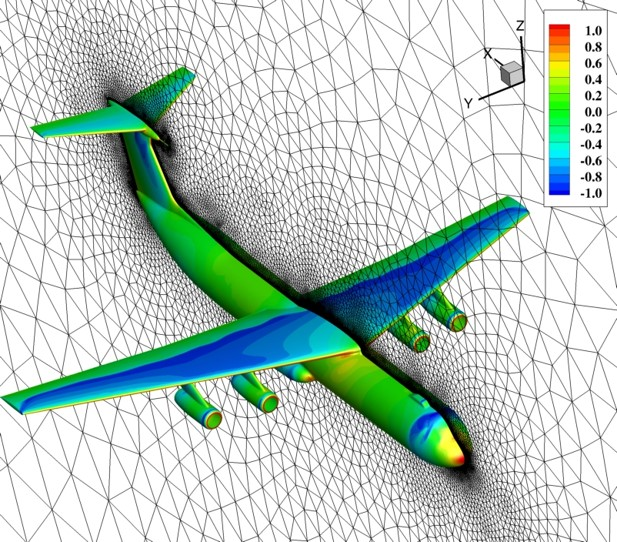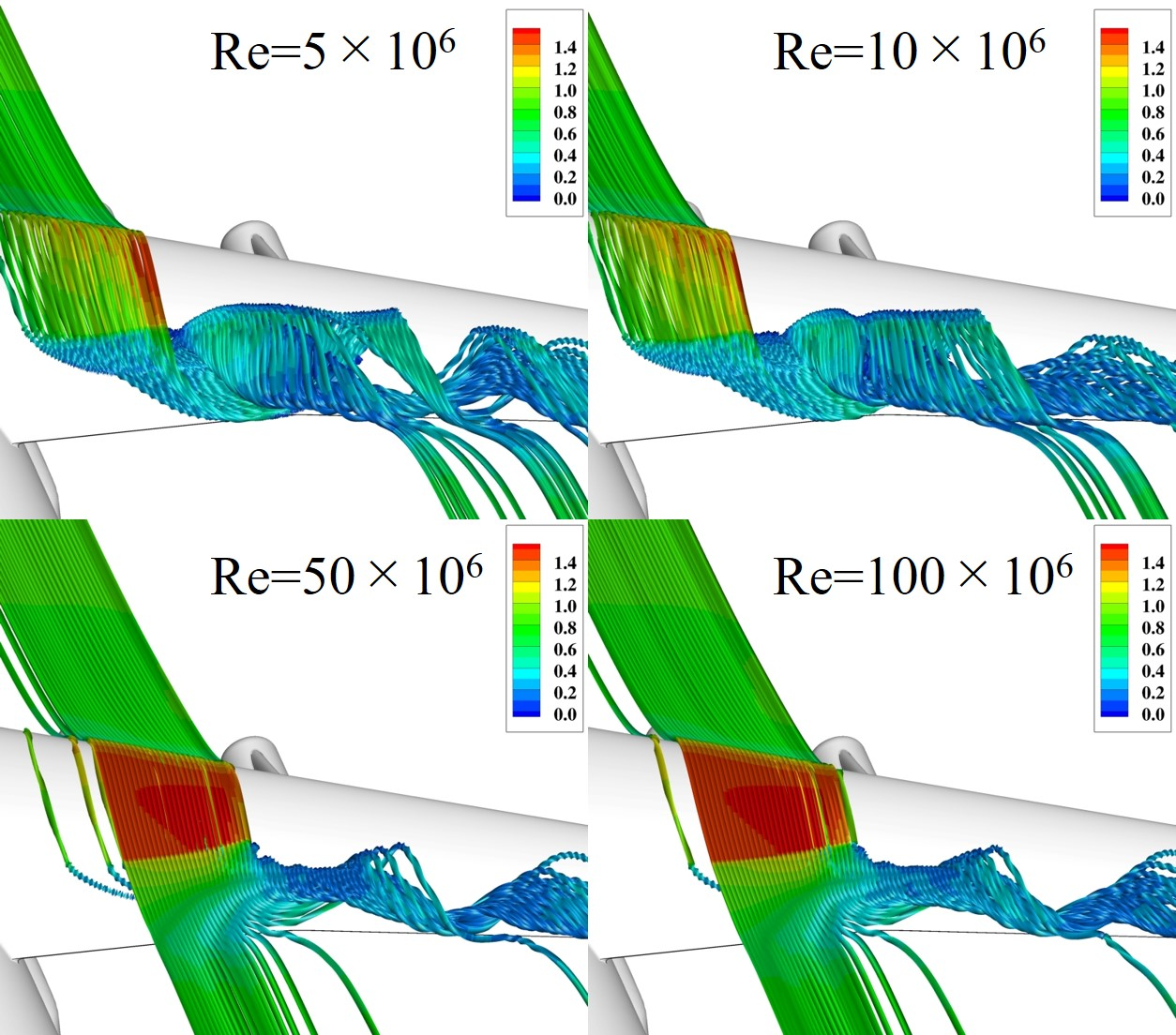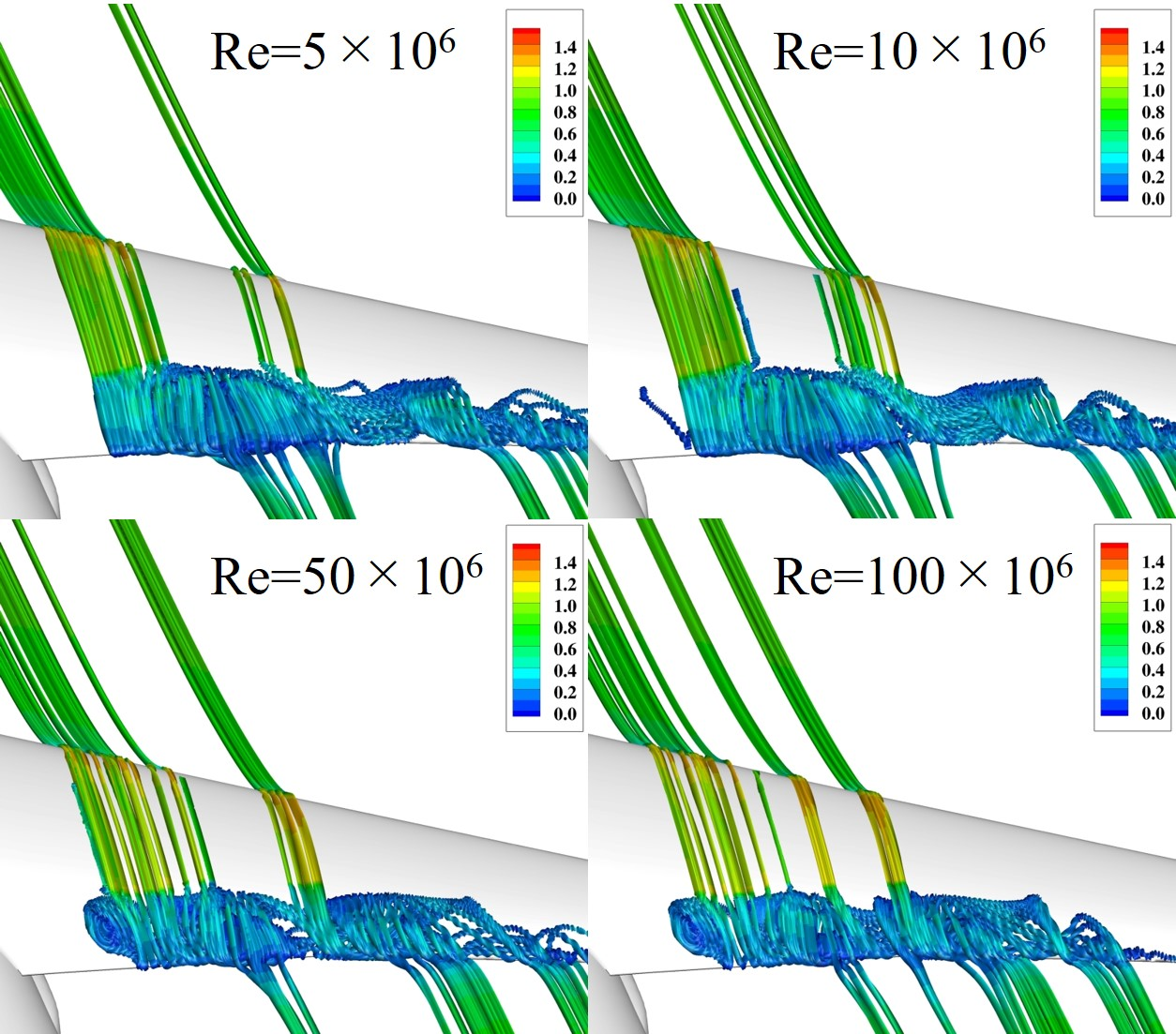Systematic improvement of build and comparison of aerodynamic models of aircraft (Indirect Reynolds number effect evaluation)
JAXA Supercomputer System Annual Report April 2018-March 2019
Report Number: R18EDA201N08
Subject Category: Aeronautical Technology
- Responsible Representative: Makoto Ueno, Aeronautical Technology Directorate, Numerical Simulation Research Unit
- Contact Information: Makoto Ueno, Aeronautical Technology Directorate, Numerical Simulation Research Unit(ueno.makoto@jaxa.jp)
- Members: Jun Sakamoto
Abstract
In aircraft development, aerodynamic characteristics of an aircraft are generally estimated using wind tunnels which can achieve insufficient Reynolds number. In this research, based on former research results, numerical analysis of transonic flow phenomena around an transport aircraft concerning indirect effect due to Reynolds number variation which can not be corrected using classical methods is performed.
Reference URL
N/A
Reasons for using JSS2
To evaluate flow phenomena around transonic transport aircraft due to Reynolds number variation by computational fluid dynamics.
Achievements of the Year
To reproduce significant indirect Reynolds number effect which appeared in the C-141 transport aircraft development,computational fluid dynamics analysis around whole aircraft was performed. In the performed analysis, indirect Reynolds number effect was, however, not observed in the case at wind tunnel Reynolds number, while the pressure distribution around the aircraft main wing agreed well with the flight test results at Re = 50e6. In the case with replacement of airfoil to a symmetric one to emphasize shock waves, indirect effect as significant shock relocation was observed. By flow visualization, cause of the shock relocation was confirmed due to span-wise flow-in inside the shock induced separtion. Downsizing of the flow-in vortex along Reynolds number variation brought the sudden shock relocation.
Publications
N/A
Usage of JSS2
Computational Information
- Process Parallelization Methods: MPI
- Thread Parallelization Methods: N/A
- Number of Processes: 216
- Elapsed Time per Case: 9.9 Hour(s)
Resources Used
Fraction of Usage in Total Resources*1(%): 0.18
Details
Please refer to System Configuration of JSS2 for the system configuration and major specifications of JSS2.
| System Name | Amount of Core Time(core x hours) | Fraction of Usage*2(%) |
|---|---|---|
| SORA-MA | 1,667,274.24 | 0.20 |
| SORA-PP | 0.00 | 0.00 |
| SORA-LM | 0.00 | 0.00 |
| SORA-TPP | 0.00 | 0.00 |
| File System Name | Storage Assigned(GiB) | Fraction of Usage*2(%) |
|---|---|---|
| /home | 9.54 | 0.01 |
| /data | 95.37 | 0.00 |
| /ltmp | 1,953.13 | 0.17 |
| Archiver Name | Storage Used(TiB) | Fraction of Usage*2(%) |
|---|---|---|
| J-SPACE | 0.00 | 0.00 |
*1: Fraction of Usage in Total Resources: Weighted average of three resource types (Computing, File System, and Archiver).
*2: Fraction of Usage:Percentage of usage relative to each resource used in one year.
JAXA Supercomputer System Annual Report April 2018-March 2019





